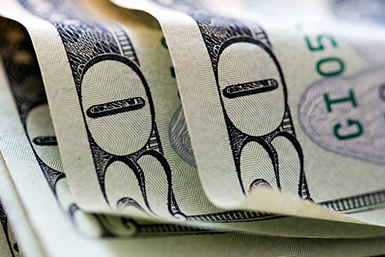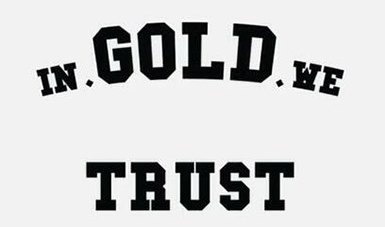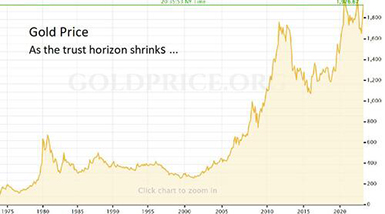| January 31, 2023 |
| Offshore Investment Guide |

Dear ,
Normal’ trading vs private placement
All trading programs in the Private Placement arena involve trade with discounted debt notes in some fashion. Further, in order to bypass the legal restrictions, this trading can only be done on a private level. This is the main difference between PPP trading and ‘normal’ trading, which is highly regulated. This is a Private Placement level business transaction that is free from the usual restrictions present in the securities market. It is based on trusted, long-established private
relationships and protocols. Normal trading activity is performed under the ‘open market’ (also known as the ‘spot market’) where discounted instruments are bought and sold with auction-type bids.
To participate in PPP trading, the trader must be in full control of the funds, otherwise he has no means of buying the instruments before reselling them. However, in addition to the widely recognised open market there is a closed, private market comprising a restricted number of ‘master commitment holders’. These are trusts, foundations and other entities with huge amounts of money that enter contractual agreements with banks to buy a limited number of fresh-cut instruments at a
specific price during an allotted period of time. Their job is to resell these instruments, so they contract sub-commitment holders, who in turn contract exit-buyers.
This form of pre-planned and contracted buy/sell is known as arbitrage, and can ONLY take place in a private market (the PPP market) with pre-defined prices. Consequently, the traders never need to be in control of the client’s funds. No program can start unless there is a sufficient quantity of money backing each transaction. It is at this point that you, the client, is needed because the involved banks and commitment holders are not allowed to trade with their own money unless
they have reserved enough funds, comprising money that belongs to clients, which is never at risk.
The ‘host’ trading bank is then able to loan money to the trader against your deposit. Typically, this money is loaned at a ratio of 10:1, but during certain conditions it can be as high as 20:1. In other words, if the trader can ‘reserve’ €100 million of client funds, then the bank can loan €1 billion against it, with which the trader can trade.
In all actuality, the bank is giving the trader a line of credit based on how much client funds he controls, since the banks can’t loan leverage money without collateral. Because bankers and financial experts are well aware of the ‘normal’ open market and of so-called ‘MTN-programs’, but are closed out of this private market, they find it hard to believe that it exists. Bankers in top-tier, global banks (where this trading takes place) are ignorant that this trading exists within
their own institutions because it happens at a level far removed from their own mainstream corporate or retail banking operations.
Arbitrage and Leverage Private Placement trading safety is based on the fact that the transactions are performed as arbitrage. This means that the instruments will be bought and resold immediately with predefined prices. A number of buyers and sellers are contracted, including exit-buyers comprised mostly of large financial institutions, insurance companies, or UHNWI’s. The arbitrage contracts, provision of leverage funds from the banks and all settlements follow long-established
and rapid processes. The issued instruments are never sold directly to the exit-buyer, but to a chain of market participants.
The involved banks are not allowed to directly participate in these transactions, but are still profiting from them indirectly by loaning money with interest to the trader as a line of credit. This is their leverage. Furthermore, the banks profit from the commissions involved in each transaction. The client’s principal does not have to be used for the transactions, as it is only reserved as a compensating balance (‘mirrored’) against the credit line provided by the bank to the
trader. This credit line is then used to back up the arbitrage transactions.
Arbitrage trading does not require the credit line to be used, but it must still be available to back up each and every transaction. Such programs never fail because they don’t begin before arbitrage participants have been contracted, and each actor knows exactly what role to play and how they will profit from the transactions. The trader is usually able to secure a line of credit typically 10 to 20 times that of the principal (the client’s deposit). Even though the trader is in
control of that money, the money still cannot be spent. The trader need only show that the money is unencumbered (blocked), and is not being used elsewhere at the time of the transaction.
|
| Private Placement Programs (PPP) and Bank Trading Platforms |

The history of Private Placement Programs (PPP’s) goes back to as far as the 1930’s where it was developed, after the global depression, by the USA and Switzerland based on a unique money-lending/creation structure then operated in Siam (Vietnam). How well it worked (or not) has been lost in the annals of economic history. However, it was re-energised and significantly updated in 1944 when the world was reeling from the devastation inflicted by World War II. Economic destruction,
human misery and dislocation existed on an unprecedented scale. This was the world as it existed in July 1944 when 730 of the western world’s most prominent economic, social and political minds met in Bretton Woods, a small vacation town in New Hampshire.
John Maynard Keynes, who needs no introduction, presented a radical plan, based on the Siam experience, to rebuild the world’s economy and, hopefully, avoid a third world war. The world listened and his initiatives eventually led to the establishment of the IMF, World Bank and G7. The IMF and World bank regulate a financing structure for which the first major application was the Marshall Plan, which financed the rebuilding of Europe and much of Asia after WWII.
Explanation and evolution of PPP’s Money Creation First and foremost, PPPs exist to ‘create’ money. Money is created by creating debt. Interest is created from money that already exists, PPP’s create profit from a debt instrument. For example, you as an individual can agree to loan €100 to a friend with the understanding that the interest for the loan will be 10%, resulting in a total to be repaid of €110. What you have done is to actually create €10, even though you don't see that
money initially. Don't consider the legal aspects of such an agreement, just the numbers. Banks are doing this sort of lending every day, but with much more money giving banks the power, essentially, to create money from nothing. Since PPPs involve trading with discounted bank issued debt instruments, money is created due to the fact that such instruments are deferred payment obligations, or debts. Money is created from that debt.
Theoretically, any person, company, or organization can issue debt notes (again, ignore the legalities of the process). Debt notes are deferred payment liabilities. Example: A person (individual, company, or organization) is in need of €100. He generates a debt note for €120 that matures after 1 year, and sells this debt for €100. This process is known as ‘discounting’. Theoretically, the issuer is able to issue as many such debt notes at whatever face value he desires – as long as
the buyers believe that he's financially strong enough to honour them upon maturity.
Debt notes such as Medium Terms Notes (MTN), Bank Guarantees (BG), and Stand-By Letters of Credit (SBLC) are issued at discounted prices by major world banks in the amount of €-billions every day. Essentially, they ‘create’ such debt notes out of thin air, merely by creating a document. The core problem is that to issue such a debt note is very simple, but the issuer would have problems finding buyers unless those buyers ‘believe’ that the issuer is financially strong enough to
honour that debt note upon maturity. Any bank can issue such a debt note, sell it at a discount, and promise to pay back the full face value at the time the debt note matures. But would that issuing bank be able to find any buyer for such a debt note without being financially strong?
If one of the largest banks in Western Europe sold debt notes with a face value of €1 million at a discounted price of €800,000 most individuals would consider purchasing one, given the financial means and opportunity to verify it beforehand. Conversely, if a stranger approached an individual on the street with an identical bank note, issued by an unknown bank, and offered it for the same sale price; most people would walk away. It is a matter of trust and credibility. This also
illustrates why there's so much fraud and so many bogus instruments (and the joker-brokers and dreamers who promote them) in this market.
Large Debt Instruments Market As a consequence of ‘money creation’ above, there is an enormous daily market of discounted bank instruments (e.g., MTN, BG, SBLC, Bonds etc) involving issuing banks and groups of exit-buyers (pension funds, large financial institutions, etc.) all operating in an exclusive Private Placement arena. All such activities by the bank are done as ‘Off-Balance Sheet Activities’. As such, the bank benefits in many ways. Off-Balance Sheet Activities are
contingent assets and liabilities, where the value depends upon the outcome of which the claim is based, similar to that of an option. Off-Balance Sheet Activities appear on the balance sheet ONLY as memoranda items. When they generate a cash flow they appear as a credit or debit in the balance sheet. The bank does not have to consider binding capital constraints, as there is no deposit liability.
Minimum deposit the minimum deposit to enter a PPP is usually €100 million, however sometimes clients into programs for €50 million and, if the timing is right €10 million. Large institutions, funds and foundations sometimes deposit funds in their tens of billions to create money for major projects, particularly in the developing world. The World Bank, IMF and other global monetary authorities do not have any concerns about the inflationary effects of this new money, as it is always
absorbed through labour and materials. In these programs, you will enter into a JV with the trade group and have your 50% of profits paid to wherever you instruct them to pay it. Alternatively, you will enter into a generic contract where your profits are simply paid to you from the trading group.
It is possible with some of these programs that you will be able to automatically roll-over your profits - a compound trade. An extraordinarily effective capital enhancement tool. Whereas, many other buy/sell programs required you to withdraw your profits on a regular basis. It all depends on the jurisdiction and other considerations. Examples of PPP and Buy/Sell Program performance is shown below. PPP Performance (demonstration only): Placement: €100m Monthly Returns: Estimate 100%
Frequency: 10 Months/40 Weeks Total Earnings: €1Bn The explanation for how the above yields are delivered across PPP’s are presented in High Yield – How PPP’s Yield Your Exceptional Profits.
Request an introduction to a Private Placement Program.
|
| Gold And The Shrinking Trust Horizon |

Via John Rubino's Substack
Last week I posted an article on the implosion of the official vaccine narrative.
That’s a controversial topic so not surprisingly it generated some heat on both sides. And a few readers expressed the wish that I’d stay in my lane (precious metals investing) and avoid venturing into unrelated and less well understood territory.
But believe it or not, the public health establishment losing its credibility is related to precious metals, via something called the trust horizon. It works like this: When things are good and the people in charge of big systems seem to be running them well, we’re content to trust the experts. We keep most of our money in banks, brokerage houses, and crypto wallets that exist for us only as websites. We buy produce that’s grown in a different hemisphere and shipped via boats,
trains, and trucks to corporate chain grocery stores. We vaccinate ourselves and our kids according to the schedules set by the NIH or the CDC. We pop pills on our doctor’s orders without doing any research. We eat processed foods on the assumption that the FDA keeps them free of dangerous additives. And we believe what we see on cable news.
In other words, our trust horizon, defined as the distance from ourselves at which we’ll believe what we’re told, is global. We assume everything everywhere is working for our benefit and we’re thus willing to put our welfare in those distant hands.
But let some big systems fail to take proper care of us and we pull back, finding people and institutions closer to home that we can see and judge first-hand. We move our money out of distant banks and brokers and into local credit unions whose managers live down the street. We start buying groceries from farmers markets or directly from local farmers. Instead of popping whatever pill is standard for our ailments we look into “food as medicine” and other lifestyle remedies like
exercise, supplements, and meditation. We homeschool our kids and join gun clubs. We buy homesteads and start raising chickens.
So where are today’s Americans on the trust horizon spectrum? Well, the military industrial complex is starting (potentially nuclear) wars all over the place. Government debt is growing exponentially. Wall Street has turned the markets into one big casino. Universities have become (very expensive) insane asylums. Congress is full of insider traders who amass fortunes while “serving the public.” And our presidents, well, insert your sarcastic phrase here.
It's safe to say that for a growing number of disillusioned people, trust now extends to – maybe -- the governor’s mansion, city hall, local farmers, their church and one or two community banks. And that’s about it.
Where does gold come in?
The biggest of the big systems that the experts have failed to manage is money. If we can’t trust the monetary authorities to maintain the value of the dollar (and in the past year we’ve learned that we emphatically cannot) then we need other forms of money to trust. And that would be gold and silver, the forms of money that disillusioned people have been running to since literally before the Roman Empire.
The advantage of precious metals lies with the concept of “counterparty risk.” Fiat currencies and pretty much everything else in today’s world require someone (the counterparty) to keep a promise for the thing in question to perform as advertised.
For your dollars to hold their value, the Fed must keep the money supply under control. For your bank account to work your bank has to stay solvent. Likewise your brokerage house. But gold and silver have no counterparty risk. No one must keep a promise for them to stay valuable. They are what they are, regardless of the behavior of the world’s experts. That’s why those experts hate precious metals and why regular people rediscover them every few generations.

Looked at this way, you can draw a direct line from the vaccine mess to gold and silver coins and bars stored in a safe place. And the line is getting thicker and stronger with every new scandal.
* * *
Subscribe to John Rubino
|
| Investors urged to seize markets’ bullish sentiment |

A rallying call for investors has been sounded by the CEO and founder of one of the world’s largest independent financial advisory, asset management and fintech organisations.
It comes from Nigel Green of deVere Group as global markets have got off to a confident start to the year.
The MSCI gauge – the global stock market index - has rallied 9% so far this year after slumping nearly 20% in 2022.
He notes: “The re-opening of China, weaker gas prices, and growing signs of a ‘soft landing’ for the U.S. economy as it appears that the Federal Reserve is reducing inflation without creating significant unemployment, are amongst the factors which have improved the outlook for global markets.
“This is causing a bullish sentiment as investors believe that many of 2022’s headwinds are now in the rear-view mirror.”
He continues: “The worry over corporate earnings in the first half of 2023 is a near-term concern, but one that investors appear reasonably happy to look beyond.
“Investors are looking ahead to the second half of the year, and to a global economic recovery underlined by an end to interest rate hikes from the major central banks by mid-summer, and possibly rate cuts at the end of the year as inflation falls sharply on a year-on-year basis.”
Market volatility in recent times has lowered valuations of some high-quality equities. This, says Nigel Green, will now be being used by savvy investors “to create better long-term investment opportunities and generate higher income for investors. They will be currently viewing this backdrop as a buying opportunity to top-up their portfolios.
“Inflation will still be an issue for a while to come, but less so as we move through the year.
“But it is likely that investors will be seeking to increase exposure to growth stocks, especially the currently undervalued ones, as cost of living eases and global growth picks up momentum.”
The deVere CEO concludes: “With a better year already underway way and the market currently low, investors should be positioning portfolios to take advantage of a brighter outlook. Many will be moving fast, so as not to miss the opportunities.”
|
|
|







 About us
About us